#Meganeura
Text
Another carboniferous painting, going for something more stylized this time
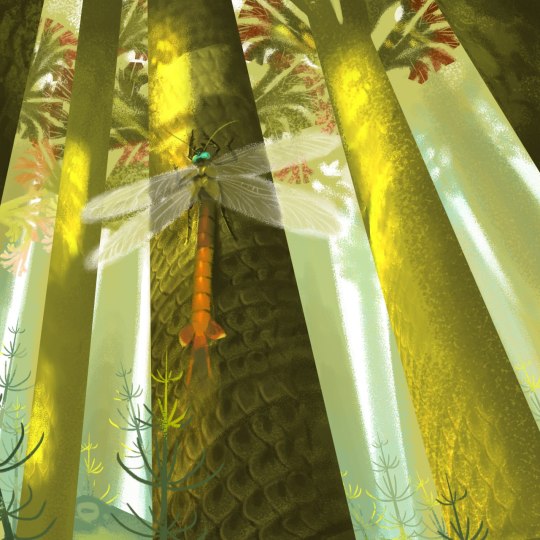
#art#digital art#illustration#insect#paleoart#palaeoblr#carboniferous#meganeura#griffinfly#lepidodendron#scale trees#club mosses#paleozoic#Palaeozoic
2K notes
·
View notes
Text
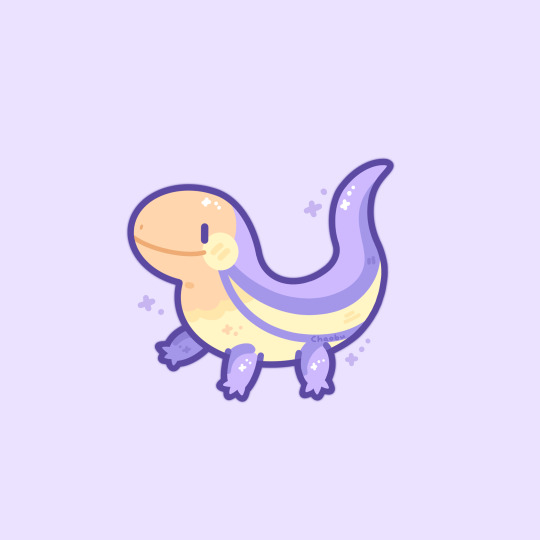







31 days of pastel paleo critters (1-8)!
Hylonomus
Archaeopteryx
Archelon
Hesperornis
Titanoboa
Meganeura
Basilosaurus
Sinosauropteryx
#paleontology#prehistoric#Hylonomus#Archaeopteryx#Archelon#Hesperornis#Titanoboa#Meganeura#Basilosaurus#Sinosauropteryx
2K notes
·
View notes
Text
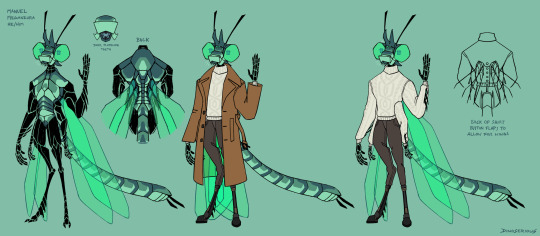
manny ref. hes not had a good one since i first designed him oopsie
#meganeura#anthro#furry#insect#character design#under the eyes#manny ute#weeeeeee manny ref real#i feel like i should put somethin in that big gap but idk what so. empty fir nowsies
624 notes
·
View notes
Text
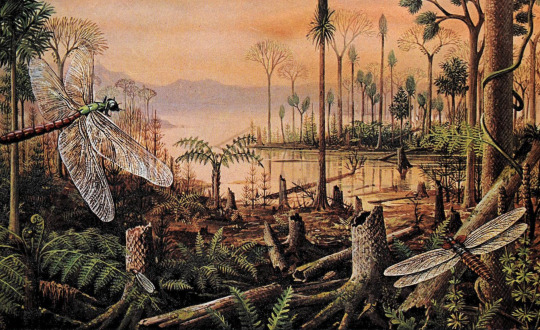
Late Carboniferous scene, G. B. Bertelli
When the air is still, soaked in the swamp's humidity, the only sound is that of the meganeurids' wings beating against it. It is like the gentle noise of paper rattling in the wind, or breaths shivering against the throat.
But to the swamp's the smaller insects, the beat of those wings is like the roar of thunder, a buzzsaw that warns them to retreat under leaves, under logs, under water. Bugs freeze, flies flee, and silverfish slither into shadows when the meganeurids pound the skies with those French chapel wings. Those who ignore the warning are snatched and devoured before they know they are dead.
64 notes
·
View notes
Text
I think my quality of life would be measurably better if we still had Carboniferous-sized bugs around. I want to see farmers letting herds of Arthropleuria graze in the fields, Meganeura being trained the same way as in falconry, and swimmers having to watch out for eurypterids.
60 notes
·
View notes
Text
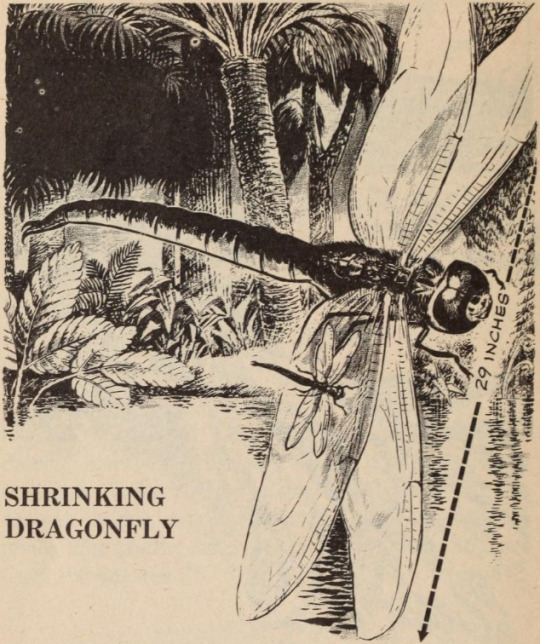
Meganeura. Animal Ghosts. Edited by Claudia Clow. Illustrated by Walt Disney Productions. 1971.
Internet Archive
70 notes
·
View notes
Text
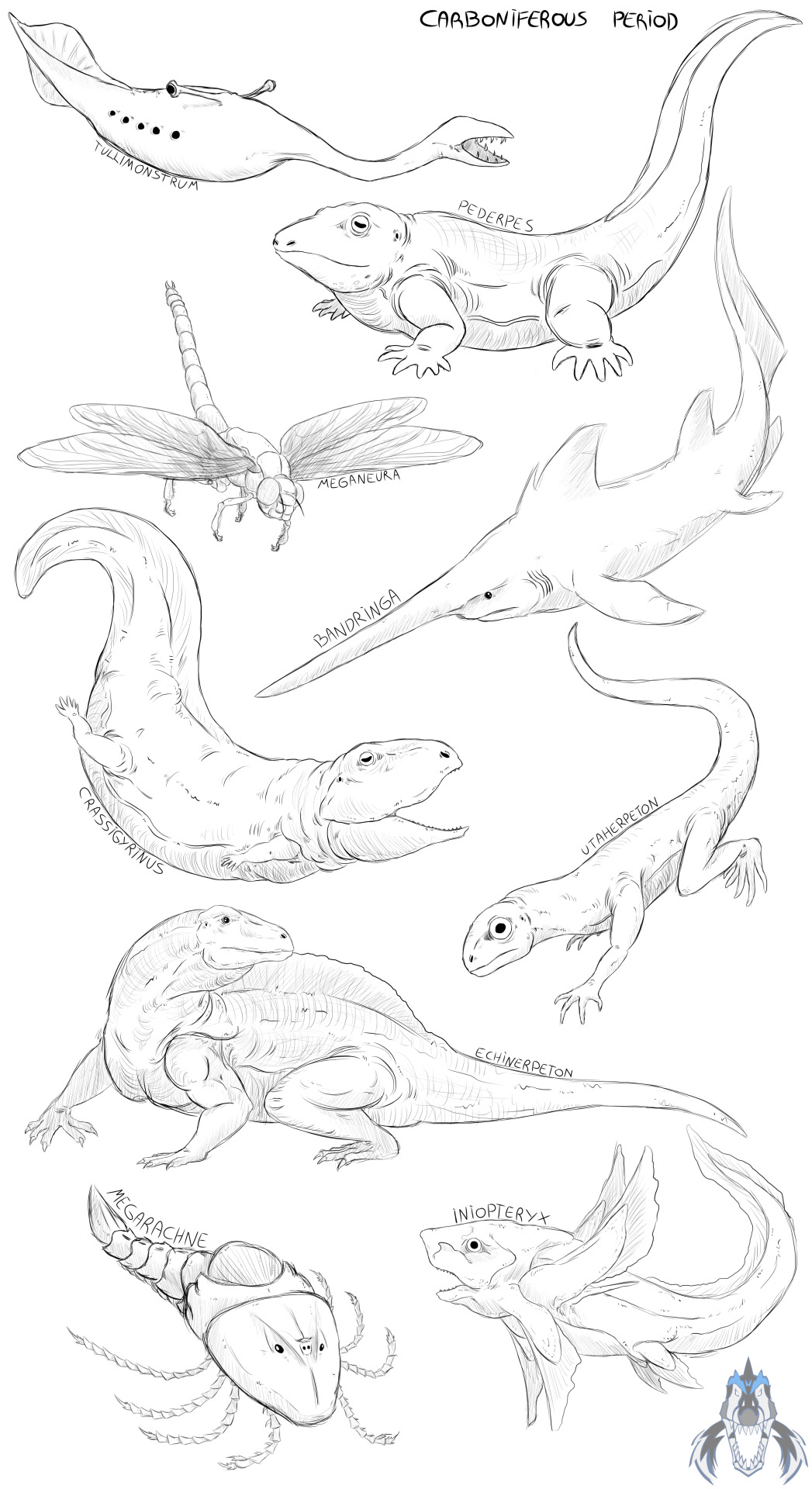
Some carboniferous fellas
#carboniferous#paleozoic#tullimonstrum#pederpes#meganeura#bandringa#crassigyrinus#utaherpeton#echinerpeton#megarachne#iniopteryx#prehistoric animals#carboniferous period#carboniferous animals
39 notes
·
View notes
Text


From last night's improve #paleostream #PaleoPines style
Deinocheirus
Meganeura
Anzu
Darwinopterus
#paleoart#paleontology#paleostream#20 minute sketch#dinosaurs#pterosaur#paleo pines#deinocheirus#meganeura#Anzu#Darwinopterus
16 notes
·
View notes
Text




A Carboniferous diorama.
33 notes
·
View notes
Text
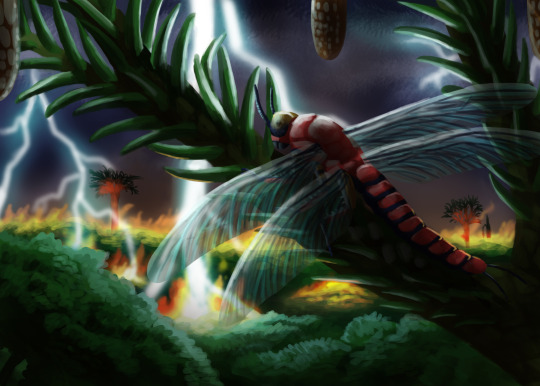
Meganeura has a bad day.
64 notes
·
View notes
Photo

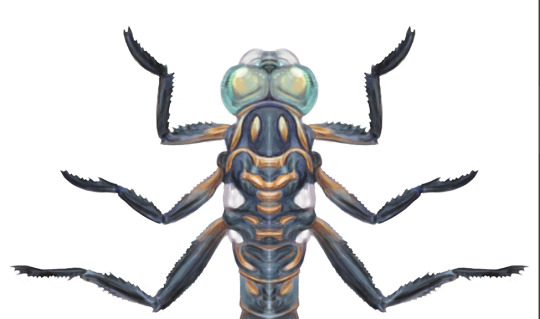
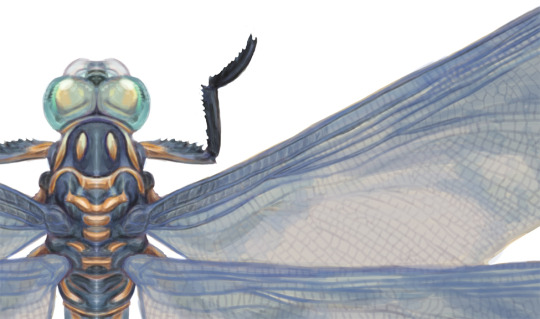
Details on Meganeura monyi
#meganeura#workinprogress#wip#carboniferous#invertefest#paleo#paleoart#paleontology#sciart#science#insect#griffonfly#dragonfly#prehistoric#naturalhistory#educational#giantbug#digitalart#digitalillustration#illustration#illustrationart#art#artist#maineartist#newenglandartist#artistsontumblr
166 notes
·
View notes
Text

Spotted some Meganeuras on my last trip
425 notes
·
View notes
Text


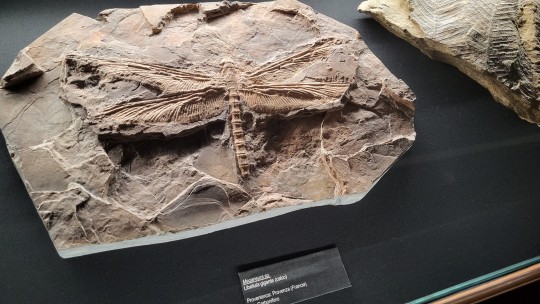




Museum of Natural and Human History, Padova
Palm room
14.04.2024
2 notes
·
View notes
Note
🦖 for the ask game?
I actually don’t know a lot about extinct animals, but off the top of my head, I think all those super big bugs from the Carboniferous period are awesome, such as hawk-sized proto-dragonflies. How cool is that?!
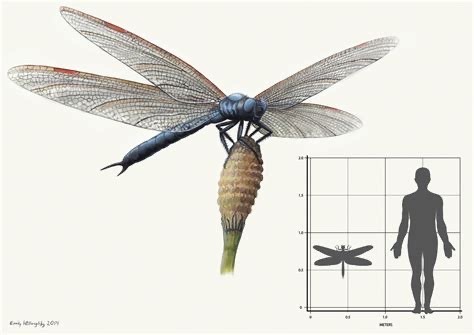
#meganeura#<- had to look up what these guys were but that’s the name#thanks for the ask!#i got asked#oh look. it’s the-ranting-ravens-lair
4 notes
·
View notes
Text

I mean, who didn't die to at least one of those?
#Meme#Ark#ark survival evolved#utahraptor#dilophosaurus#compsognathus#Pulmonoscorpius#therizinosaurus#sarcosuchus#T-rex#spinosaurus#baryonyx#carnotaurus#Titanomyrma#meganeura
14 notes
·
View notes
Text

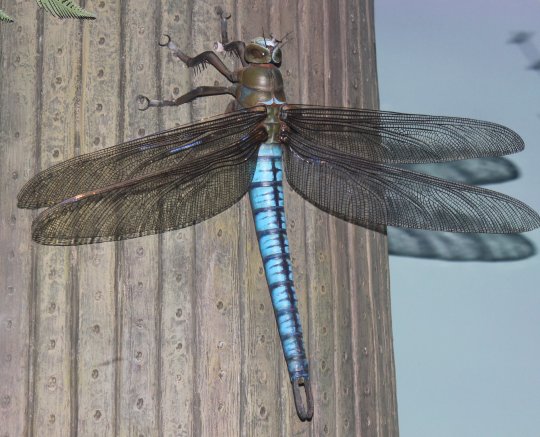


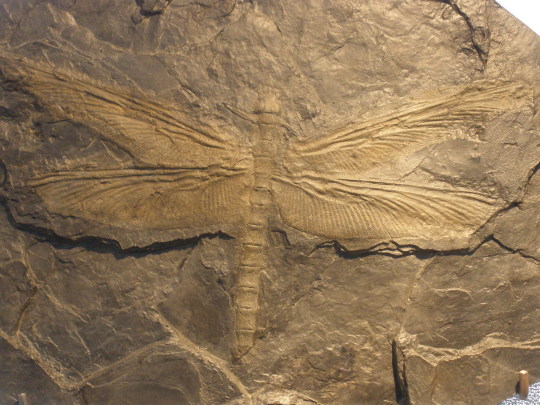


Meganeura
(temporal range: 305-299 mio. years ago)
[text from the Wikipedia article, see also link above]
Meganeura is a genus of extinct insects from the Late Carboniferous (approximately 300 million years ago). They resembled and are related to the present-day dragonflies and damselflies, and were predatory, with their diet mainly consisting of other insects. The genus belongs to the Meganeuridae, a family including other similarly giant dragonfly-like insects ranging from the Late Carboniferous to Middle Permian. With a wingspan ranging from 65 cm (25.6 in) to over 70 cm (28 in),[1][2] M. monyi is one of the largest-known flying insect species.
Fossils of Meganeura were first discovered in Late Carboniferous (Stephanian) Coal Measures of Commentry, France in 1880. In 1885, French paleontologist Charles Brongniart described and named the fossil "Meganeura" (large-nerved), which refers to the network of veins on the insect's wings. Another fine fossil specimen was found in 1979 at Bolsover in Derbyshire. The holotype is housed in the National Museum of Natural History, in Paris. Despite being the iconic "giant dragonfly", fossils of Meganeura are poorly preserved in comparison to other meganeurids.
3 notes
·
View notes